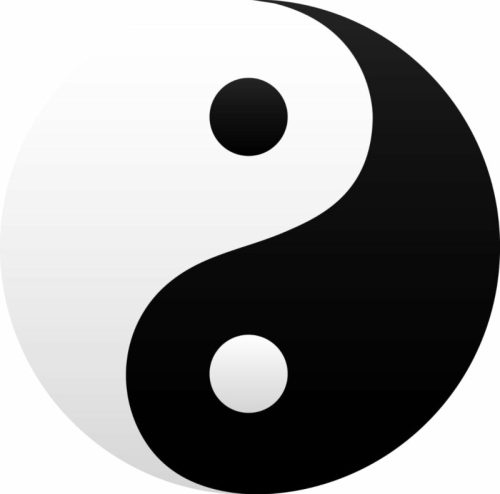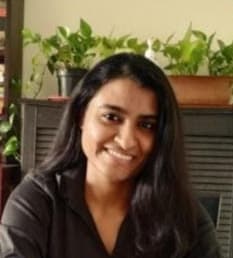Yin Yoga
by Sohaila Akbar
Yin, and Yang. What comes to mind on hearing these two words? Probably an image of a circle divided into two halves by a curved line, one white and the other black. Well, this image is one we have come across in books and movies, but what does it really mean? This symbol in Chinese philosophy, called the tai chi symbol, represents the duality of life, perpetrating the idea that two opposites can co-exist in harmony, often complementing each other. A good example to understand this is the common saying “there can be no light without darkness.”

The Yin and Yang philosophy exists not only in objects or natural phenomena, but also in our thoughts and actions. And a beautiful manifestation of our thoughts and actions is our Yoga practice. So, let’s see how the opposing ideas of Yin and Yang permeate Yoga.
Yin energy is passive, restive and receptive. It is flexible and soft. It represents stillness. It is a quiet, retreating energy. Yang energy is active, energetic and creative. It is unbending and strong. It represents movement and dynamism. Now let’s equate this with Yoga. One’s practice can be either slow, passive and preferring stillness, like a restorative, cooling asana flow or a quiet meditation session. Or the practice can be fast-paced and dynamic like Ashtanga Vinyasa Yoga which leaves us perspiring in the end. However, neither one is better than the other. Both have their own benefits. Only practising restorative yoga won’t be too beneficial for our health, while only practising vinyasa might overtire us.
A good approach for most practitioners is a blend of both Yin and Yang style of Yoga. Specially today, when most of us are already leading a yang lifestyle with so much going on in our lives both physically and mentally, adopting Yin practices as a part of our lives will be tremendously beneficial. Having understood that, let us dive into the concept of Yin Yoga.
Yin Yoga combines the teachings and philosophies of traditional Hatha Yoga and Chinese Taoist philosophy. It is a style that emphasizes stillness, longer holds and relaxed breathing. Most yang styles in yoga focus on strength and flexibility by working on superficial muscle tissues; Yin Yoga brings about flexibility by its deep stretches, by working on the deeper connective tissues like tendons, ligaments and fascia. Most Yin postures are practised passively sitting or lying down, liberal with the use of props. It is assisted by gravity to provide the deep stretch while one holds the postures for longer durations. So, instead of muscle contraction and heart rate elevation found in yang styles, Yin Yoga encourages muscle relaxation, deep breathing and surrendering to gravity.
While the Yin postures are taken from Hatha Yoga, the idea behind holding the postures follows certain principles that are ingrained in Taoist practices. There are three principles defined by Sarah Powers, a pioneer of Yin Yoga. These principles help ensure the safety and effectiveness while practising this style.
The first principle is ‘finding your edge.’ It means we should know when to stop during a posture. It brings a balance between feeling no muscular sensation and too much sensation. When we start feeling a good amount of sensation that is not yet overpowering or painful, that is the edge. Going beyond that might lead to injuries. Remember, this edge can be found only by moving into the posture slowly and steadily.
The second principle is ‘be still.’ It requires one to remain still after finding the edge. One should avoid fidgeting and constantly adjusting the posture. This stillness helps us be aware of our physical limits and progress in the practice accordingly. Eventually, it also helps in focusing on the breath, removing mental distractions and achieving a meditative state during the practice.
The third principle is ‘hold the posture.’ Beginners in Yin Yoga should preferably hold the posture for 1 to 3 minutes, as per their capacity. More advanced practitioners can hold the asanas from 5 to 10 minutes. This is done in order to get the most out of the practice. However, these durations are indicative; one should always honour their bodies and feel free to come out of the posture when required.
One more aspect of Yin Yoga is taking physical support via props. Yoga props allow us to practice Yin asanas effectively and safely, specially because the holds are longer. Of course, we can always practice without props in the advanced stages, or by modifying the asanas in the initial stages, but props take the mind off the strain of maintaining the modification and help in surrendering to gravity.
Now that we know about Yin Yoga and its principles, let us look at its benefits. How exactly does it help us and do we really need it? We’ve already touched upon the aspect of balance brought about by practising both yin and yang styles of Yoga. Yin benefits our physical, mental and emotional health in a different manner than a yang practice. Since it focuses on stretching the deeper connective tissues, it leads to better joint health. Finding the edge and then holding the posture for relatively longer periods increases joint flexibility and mobility without over-straining the muscles and joints. It also makes the muscles supple and improves the lymphatic system of the body.
Even though Yin Yoga is a passive style of Yoga, it does not mean that it is effortless. We need to remain mindful of following the principles and not letting the mind wander aimlessly. This eventually helps alleviate mental and emotional stress. It helps our overactive minds to quieten and focus internally. When we physically and mentally surrender to the practice, achieving inner peace and calm becomes easier.
Cultivating both yin and yang energies is essential in one’s Yoga practice. Yin Yoga acts as a great counterbalance for fast paced Hatha styles. But in the larger picture, the concept of yin need not be exclusive to any one form of practice. Even in a yang style like Ashtanga Vinyasa, there is a yin aspect: the mental stillness with each movement, a stillness brought about by one’s breath and gaze. Even the Shavasana taken at the end of any yang asana practice is meant to bring about the yin and balance the energies. Having said that, Yin Yoga, in my opinion, is much needed today to help us find a sense of stillness in our increasingly busy lives. It is in our best interest to understand and acknowledge the fact that holistic health comes from creating this balance: balance between the fast and the slow, the active and the passive, the calming and the stimulating, the yin and the yang.
About the Author

Sohaila Akbar
Sohaila is a Yoga teacher, keen on bringing about positive changes in the lives of others through the knowledge that she has received from her teachers. Prior to this she was a school teacher working towards imparting academic, social and ecological knowledge to young learners. Sohaila is an avid reader of books and have an undying love for fiction. She prefers paperbacks and hardcovers over e-books anyday. She loves travelling, and a good cup of coffee is always welcome!
